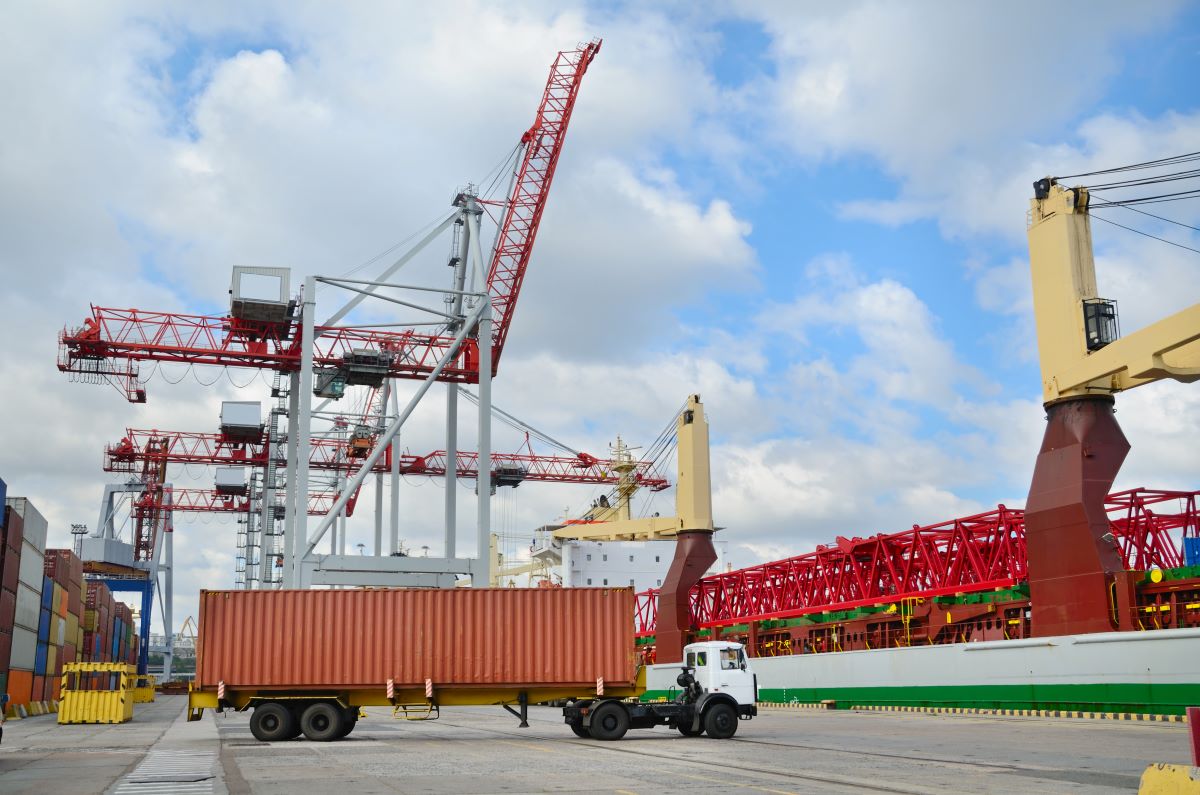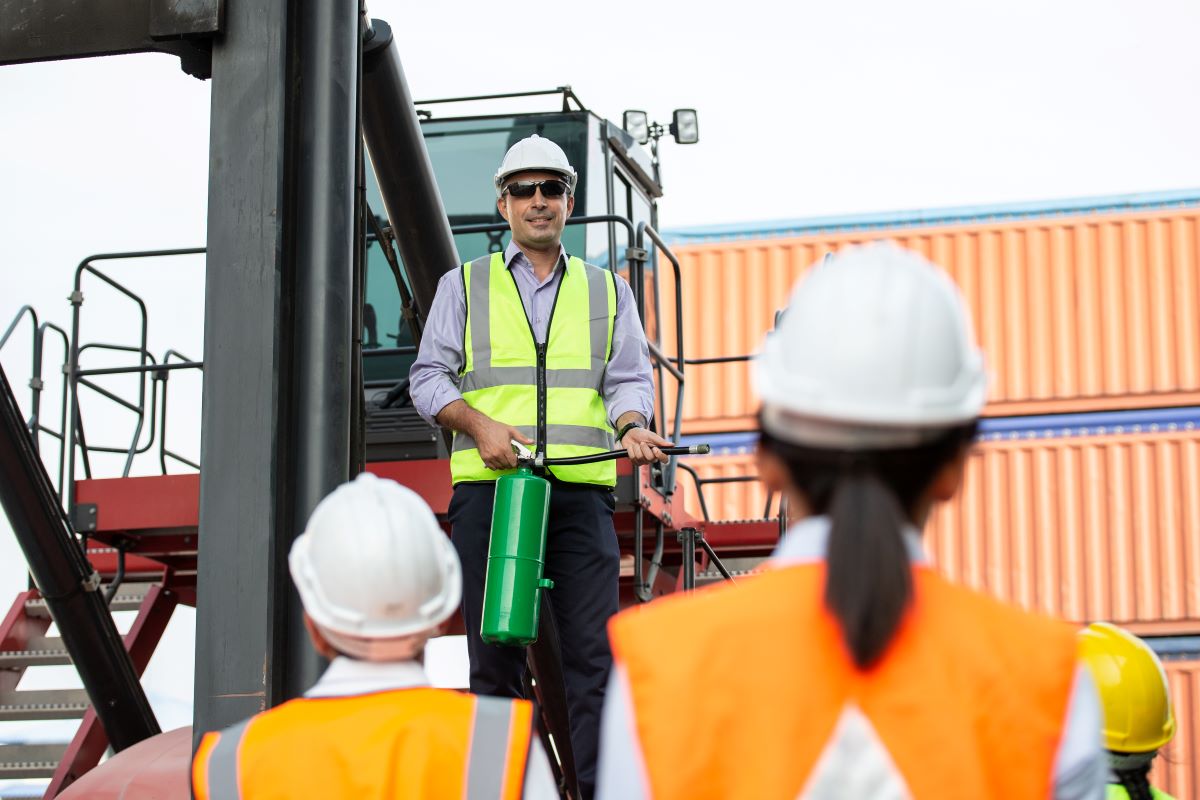
At the heart of every marine terminal operation lies a deeply rooted commitment: ensuring that each member of your team returns home safely at the end of the day. Your employees are your most valuable asset, and their safety, health, and well-being are vital.
In the United States, remaining OSHA compliant isn’t just a legal obligation but a fundamental commitment to your team’s welfare and success.
In this guide, we’ll cover everything a marine terminal operator needs to know about OSHA and its relationship with the marine terminal industry.
What is OSHA?
OSHA is the Occupational Health and Safety Administration, a federal agency within the United States Department of Labor.
Since its establishment in 1970, OSHA has been primarily responsible for ensuring the health and safety of workers by setting and enforcing workplace safety standards. This includes providing training, outreach, education, inspection, and assistance.
How Marine Terminals Can Remain OSHA Compliant
OSHA’s standards for marine terminals, specifically codified under 29 CFR Part 1917, alongside the Longshoring standards under 29 CFR Part 1918, form the backbone of safety regulations in the maritime industry.
There are three key areas of focus:
1. Personal Protective Equipment (PPE)
To be OSHA compliant, employers must provide necessary PPE to workers. The selection of PPE must be based on a thorough hazard assessment of the workplace and include items like:
- Head protection
- Safety glasses or face shields
- Gloves
- Hearing protection
- Safety footwear
- High visibility vests or equivalent protection
- Life jackets
2. Training and Education

OSHA also makes adequate training an essential focus for ensuring that workers are aware of potential hazards and understand how to perform their duties safely.
Specific training requirements are unique to each workplace but generally include courses such as:
- OSHA 10-hour and 30-hour Outreach Training: These courses are designed to provide workers with awareness of common job-related safety and health hazards
- Hazard Communication Training: Educates workers on the right to know about chemicals they might be exposed to in the workplace, as well as understanding Safety Data Sheets (SDS) and chemical labeling
- Emergency Response Training: Prepares workers to respond effectively in emergencies. This includes things like evacuation procedures, first aid training, and the use of fire extinguishers
- Equipment Operation Certification: Specific certifications for the operations of cranes, forklifts, and other heavy machinery used in marine terminals
3. Hazard Control
Hazard control is a continuous process. OSHA’s guidelines and resources, including the “Fatal Facts Guidesheets” for longshoring and marine terminals, are the best resources for understanding common hazards and how to prevent them.
Other than preventing specific workplace accidents, for which the Fatal Facts Guidesheets are invaluable, general hazard recognition and control consists of:
- Engineering controls
-
- Administrative controls
- Safety nets and fall arrest systems
- Equipment inspection and maintenance
- Housekeeping, including streamlined yard planning
OSHA Enforcement
To ensure businesses are OSHA compliant, OSHA enforces its standards through a system of compliance programs. These include inspections, citations, penalties for non-compliance, and education and assistance programs to help employers meet health and safety standards.
Inspections
OSHA’s enforcement activities often begin with an inspection.
Inspections can be prompted by factors like worker complaints or referrals, as well as workplace accidents. However, they may also result from random selection or follow-ups on previous inspections.
Penalties
If violations are found during OSHA inspections, OSHA may issue citations or propose other penalties.
Penalties are generally based on the nature of the violation, for example:
- Non-Serious Violations: These violations are not likely to cause death or serious physical harm and, therefore are not penalized as strictly
- Serious Violations: Conditions where a substantial probability of death or injury is found. These violations can result in significant penalties as well as serious reputational damage
- Repeated Violations: Penalties for recurring issues can escalate in severity
- Willful Violations: A violation committed with plain indifference to the law. In other words, one where the employer knowingly violated OSHA standards. These violations carry the highest possible penalties, including potential criminal charges
Failure to comply with OSHA standards can result in additional consequences such as legal action, increased scrutiny, and reputational damage, leading to higher employee turnover and difficulty attracting high-quality candidates.
Compliance Assistance
OSHA’s primary goal is the health and safety of workers. To that end, they offer numerous resources and services to help employers understand and comply with their standards.
Penalties are the last resort, so it’s recommended that marine terminal operators who aren’t sure what standards they’re beholden to familiarize themselves with these resources:
- OSHA’s Maritime Industry Webpage
- This webpage will help employers find OSHA training centers
- The National Safety Council (NSC) is a non-OSHA-affiliated organization that provides additional safety resources and training that can complement OSHA’s guidelines
Final Tip: Invest in Software Solutions to Help Keep Your Terminal Safe
A marine terminal operator’s goal is to make sure their operation is as safe as possible.
Tideworks’ software solutions are specifically created with marine terminals in mind. Systems like Terminal View are designed to provide terminal operators with visibility of their operations by tracking the location of equipment and potential bottlenecks, hazardous materials, and more.
By visualizing what’s happening in the yard and tracking containers that contain hazardous materials, Tideworks’ suite of solutions can contribute to a safe and OSHA compliant workplace.
Get in touch with Tideworks today to learn more about which solutions are right for your marine terminal.
